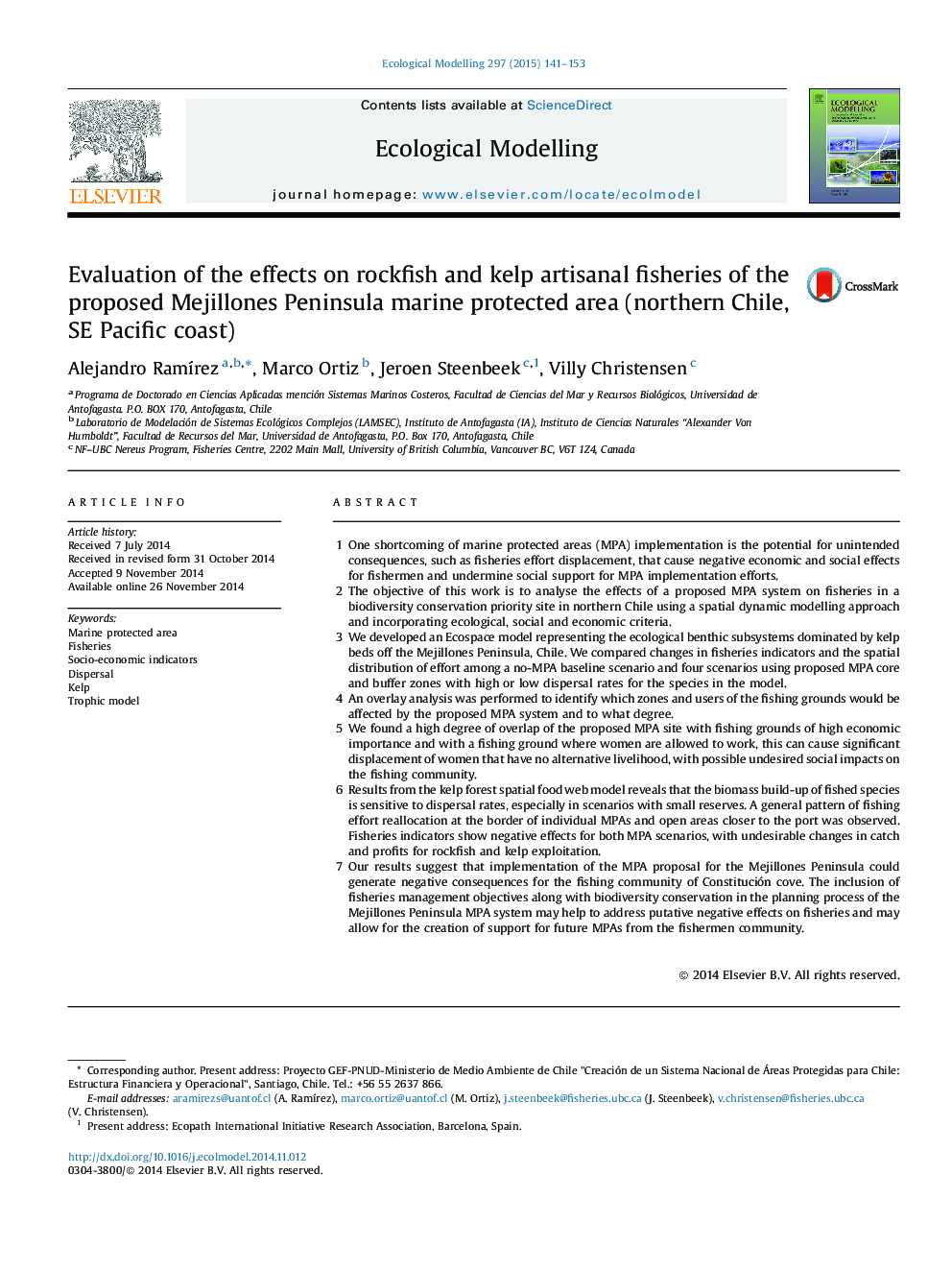| Article ID | Journal | Published Year | Pages | File Type |
|---|---|---|---|---|
| 4375824 | Ecological Modelling | 2015 | 13 Pages |
•We developed spatially explicit trophic models of kelp ecosystems in Northern Chile.•We explored ecosystem and fishery effects of a proposed MPA system.•For small MPAs biomass build-up of fished species is sensitive to dispersal rates.•Fisheries catch and profits show negative effects for large and small MPA scenarios.
•One shortcoming of marine protected areas (MPA) implementation is the potential for unintended consequences, such as fisheries effort displacement, that cause negative economic and social effects for fishermen and undermine social support for MPA implementation efforts.•The objective of this work is to analyse the effects of a proposed MPA system on fisheries in a biodiversity conservation priority site in northern Chile using a spatial dynamic modelling approach and incorporating ecological, social and economic criteria.•We developed an Ecospace model representing the ecological benthic subsystems dominated by kelp beds off the Mejillones Peninsula, Chile. We compared changes in fisheries indicators and the spatial distribution of effort among a no-MPA baseline scenario and four scenarios using proposed MPA core and buffer zones with high or low dispersal rates for the species in the model.•An overlay analysis was performed to identify which zones and users of the fishing grounds would be affected by the proposed MPA system and to what degree.•We found a high degree of overlap of the proposed MPA site with fishing grounds of high economic importance and with a fishing ground where women are allowed to work, this can cause significant displacement of women that have no alternative livelihood, with possible undesired social impacts on the fishing community.•Results from the kelp forest spatial food web model reveals that the biomass build-up of fished species is sensitive to dispersal rates, especially in scenarios with small reserves. A general pattern of fishing effort reallocation at the border of individual MPAs and open areas closer to the port was observed. Fisheries indicators show negative effects for both MPA scenarios, with undesirable changes in catch and profits for rockfish and kelp exploitation.•Our results suggest that implementation of the MPA proposal for the Mejillones Peninsula could generate negative consequences for the fishing community of Constitución cove. The inclusion of fisheries management objectives along with biodiversity conservation in the planning process of the Mejillones Peninsula MPA system may help to address putative negative effects on fisheries and may allow for the creation of support for future MPAs from the fishermen community.
